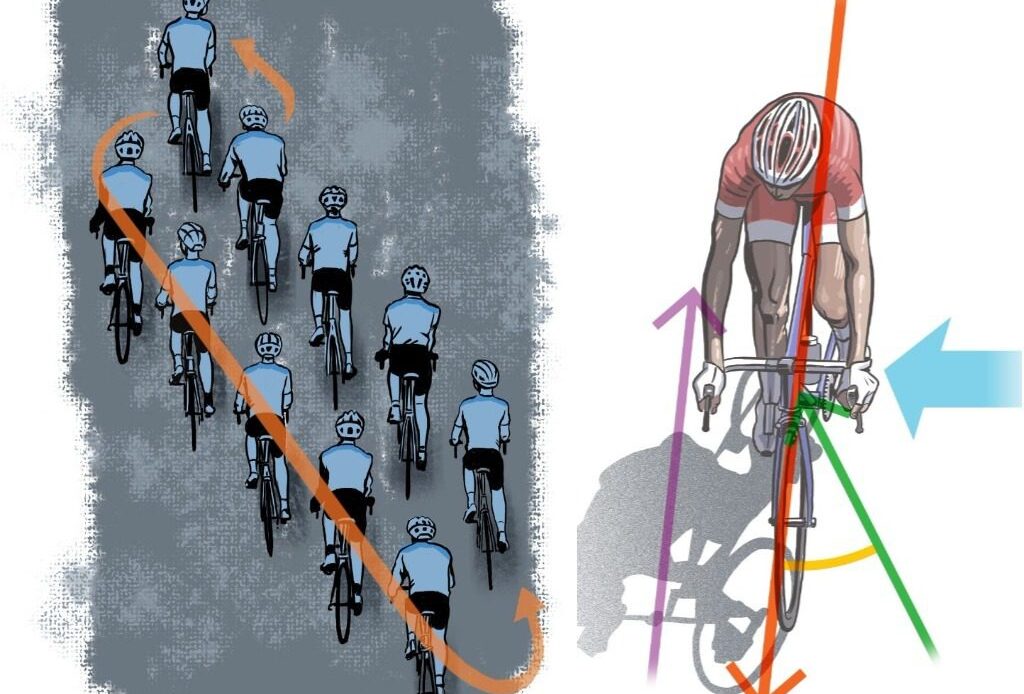If you’re planning on jumping into a group ride this year, you’re going to want to learn the art of the pace line. One of the great things about cycling in a group is being able to go faster as a result of drafting and taking turns pulling in the wind. You’ll be able to save close to 20 per cent of your energy by doing so. As the group increases, so too does the energy savings.
There’s a few different types of pacelines in cycling, depending on the situation.
Single paceline
A single paceline is what you see often in a team time trial. A team utilizes a single paceline to give each rider as much slipstream as possible. The draft is the reduced air pressure behind a rider leading into the wind.
In a single paceline, each rider moves to the front of the line, hits the wind and does a pull, and then drifts back. It’s essential that everyone moves at a constant speed and does not surge. If you feel stronger, instead of speeding up, just pull longer. If you don’t feel as strong as the other riders, simply pull up and over, but keep the paceline going. You can also “skip” turns and hang at the back, as long as the others know, so as you don’t disrupt the flow.
Double paceline
The double paceline is what you might see more on a less intense group ride. With a bigger group, it is much safer, riding side by side, two abreast.
In a double paceline, two riders at the front pull for as long as they wish, being careful as not to surge, then swing off to their respective sides when it’s safe to do so, falling to the back. The next pair of riders repeat the process.
Echelon
If a group is trying to combat serious crosswinds in a race, the echelon is the tried, tested and true formation. If you’ve ever seen birds fly in a V pattern, then you’ve seen an echelon.
Goooooooodbye!pic.twitter.com/xlGCAbtwIe #UCIDoha2016 #doha2016 #crosswind #echelon
— ᒍOᑎ ᑕᗩᑎᑎIᑎGᔕ (@jon_cannings) October 17, 2016
It is essentially a diagonal single paceline. Say the wind is coming from the left side of the road, then the leader of the group will be on the left and the others will trail off to the right.
Riders in the front side will move upward to the left, while riders in the back side will drift to the right. Just like in a single paceline, it’s important to keep things steady and smooth.
If someone speeds up, then that affects the riders behind and it could create gaps. Just like…
Click Here to Read the Full Original Article at Canadian Cycling Magazine…

